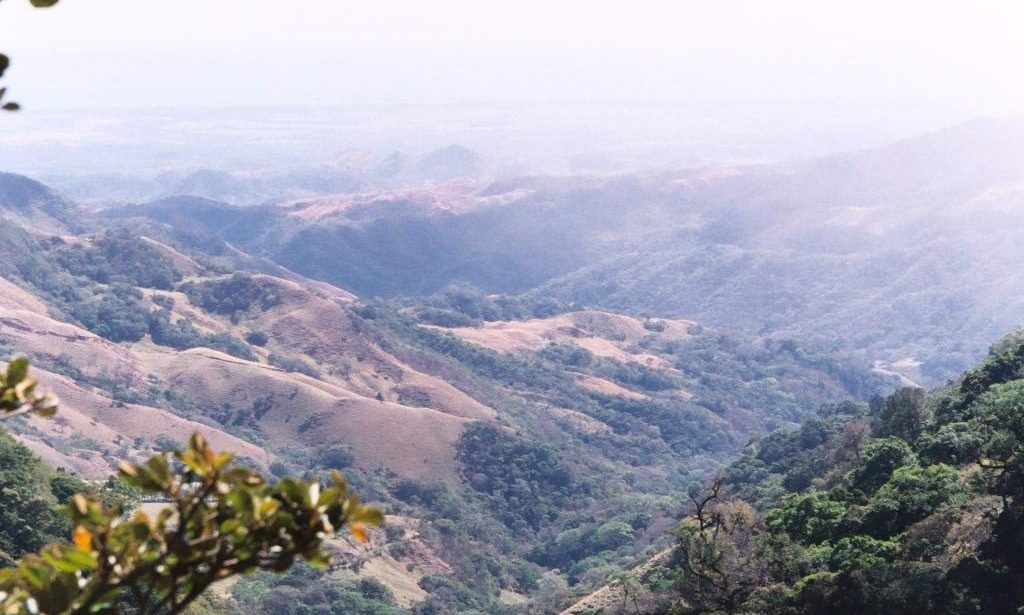We signed up for a guided night walk in the Reserva Santa Elena on our first evening in Monteverde. Cost was USD17 each, which included transportation from and back to our hotel.





Neil writes that the “guide for our night walk, Francesco, was excellent – soft-spoken, knowledgeable, friendly, and he really seemed to enjoy what he was doing.” We saw:
- agouti – large rodent
- porcupine – actually, we only saw its nose, in a hole high up in a Strangler Fig
- kinkajou (honey bear) – while it looks like a monkey, its a relative of the raccoon
- blue-crowned motmot aka “poor man’s quetzal” or “bobo” – “bobo” means dumb as they just sit there as you approach
- acacia ants – if you touch them, your fingers end up smelling sweet due to the formic acid transferred to your fingers. They live in hollow branches of living trees, and protect the tree from things that eat it.
- many sleeping birds looking like fuzzballs. They were on one leg to conserve heat.
- a thrush from North America
- hummingbirds – when it’s cold, their hearts slow down to about 40 bpm
- eyelash pit viper – we saw its head in a hole in the branch of a tree
- three-toed sloth up in a tree eating leaves
- lobster cricket
- stick insect – looked just like a green stick with a leaf
- walking stick – another insect, but this one flies
- orange-kneed tarantula, which lives in a hole next to the trail. It responds to vibrations.
We stayed at the Monteverde Paraiso for USD$10 per night. This gets you a clean private room with double bed and ensuite bathroom that was about a 7 min walk from town centre.

We did not sleep well for our first night. It was insanely windy. The hotel is on a hill and we were on the second floor. Neil was “picturing the roof lifting off and all our stuff flying away”. Fortunately, in the morning, the owner asked (without us saying anything) if we wanted to move. Our new room was in different house a couple of minutes away. We can still hear the wind in our new room, but as Neil noted, “in a more soothing way rather than an ‘imminent disaster’ way”.




















Our next stop was the Finca Cielo Verde for the coffee tour (USD$15 each for a two hour tour, it was just us). It’s a small plantation (3 acres) owned by a German lady, and the coffee is only for tourists. Our guide was very enthusiastic and spoke English well despite only learning it from books at home in the evenings for a year. We went through the traditional process of making coffee.









The beans are roasted in a thick iron skillet on a wood burning stove. It takes about 30 mins to roast, stirring about once a minute to avoid burning.

We ground the beans with a hand grinder and sampled the coffee, which is not bitter and does not have an aftertaste.
Other plantations in the area contribute to making “Cafe Monteverde” in harmony with the cloud forest. Previously they would cut down the forest to grow coffee, but now realize the importance of other growth: for clean water, oxygen, and to maintain river levels year round.
The modern process to make the Cafe Monteverde blend is for picked fruit from several plantations are brought to a small house in Santa Elena, where it is then taken to a factory. First, the skins are removed, then the beans are soaked for 2 days, then spread on the patio to dry, where they have to be raked every 15 mins. Finally they can be roasted and stored or ground.

It’s 6PM and we’re chilling in the Cafe Monteverde, chatting with one of the friendly waiters who’s from the province of Limón. Neil has spent the last 90 minutes writing about today’s adventures in our shared travel journal and I have been reading (I take my turn to write later in the evening).




Makes me thirsty for a freshly ground and roasted coffee!